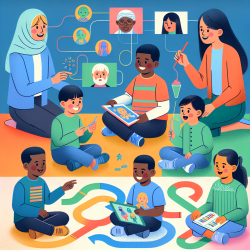Introduction
In today's fast-paced world, children often find themselves surrounded by urban environments that can be overwhelming and mentally taxing. Recent research has highlighted the potential benefits of natural environments in promoting cognitive restoration, a concept that can be particularly valuable for practitioners working with children. This blog explores the findings from the study "Evaluating visual and auditory contributions to the cognitive restoration effect" and offers insights into how practitioners can leverage these findings to enhance cognitive outcomes for children.
Understanding Cognitive Restoration
Cognitive restoration refers to the process by which exposure to certain environments can help replenish depleted cognitive resources. The Attention Restoration Theory (ART) suggests that natural environments, which require less directed attention, can facilitate this restoration process. This is particularly relevant for children, whose cognitive resources are still developing and can be easily fatigued by urban stimuli.
Key Findings from the Research
The study conducted by Emfield and Neider (2014) aimed to examine the effects of natural versus urban environments on cognitive performance. The researchers found that while natural environments were perceived as more relaxing, they did not significantly enhance cognitive performance in the short term. However, the relaxing nature of these environments suggests potential benefits for mood and well-being.
Practical Implications for Practitioners
Although the study did not find immediate cognitive benefits from short-term exposure to natural environments, practitioners can still draw valuable insights:
- Incorporate Nature into Therapy Sessions: Use images and sounds of natural environments during therapy sessions to create a calming atmosphere that may help reduce stress and improve mood.
- Encourage Outdoor Activities: Promote outdoor activities in natural settings, such as parks or gardens, which may offer long-term cognitive and emotional benefits.
- Monitor Mood Changes: Pay attention to changes in mood when children are exposed to natural environments, as this can provide clues about their individual responses to different stimuli.
Encouraging Further Research
While the study provides a foundation for understanding the cognitive restoration effect, further research is needed to explore its long-term impacts, particularly in children. Practitioners are encouraged to participate in or support research initiatives that investigate the benefits of natural environments on cognitive development and emotional well-being in children.
Conclusion
Natural environments hold promise for enhancing cognitive and emotional outcomes in children, even if immediate cognitive benefits are not apparent. By integrating elements of nature into therapy and encouraging outdoor activities, practitioners can create supportive environments that foster overall well-being. To delve deeper into the original research, please follow this link: Evaluating visual and auditory contributions to the cognitive restoration effect.










